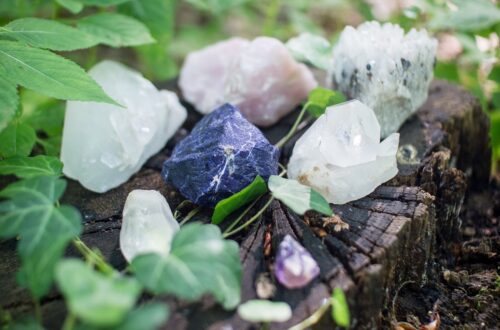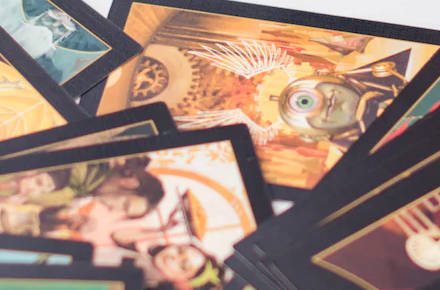
What is the magic of the elements?
Table of Contents
What is the Magic of the Elements?
The concept of the **magic of the elements** has captivated humanity for centuries, intertwining with our beliefs, cultures, and understanding of the natural world. This magical force, often symbolized by the classical four elements—**earth**, **air**, **fire**, and **water**—continues to inspire wonder and imagination across different societies. But what exactly is the magic behind these elements? Let’s dive deep into the hidden powers they represent and explore the mysteries that have made them so significant throughout history.
The classical elements: Earth, air, fire, and water
The foundation of elemental magic lies in the belief that the universe is composed of fundamental building blocks. **Ancient philosophers** and **spiritual traditions** first identified four primary elements that formed the core of all matter. Each element is associated with different qualities, energies, and mystical powers, which influence everything from the natural world to our emotions and behaviors.
Earth: Stability and fertility
**Earth** is the element of stability, grounding, and fertility. It represents the solid foundation of the physical world, the soil in which plants grow, and the mountains that rise from the ground. In many traditions, **earth magic** is linked to creation, nurturing, and abundance. The earth element is often seen as a symbol of strength, endurance, and permanence.
In various cultures, **earth** is believed to hold deep, transformative magic. For example, in **alchemy**, the earth represents the process of transmutation, the transformation of base metals into gold, symbolizing spiritual evolution. Additionally, **shamans** and spiritual healers often call upon the power of the earth to enhance healing rituals, invoking the earth’s grounding energy to bring balance and restore harmony.
Earth magic in daily life
Earth magic can also be seen in the way we connect with the land. People who engage in **gardening**, farming, or even **landscaping** experience a form of elemental magic as they work directly with the earth. The act of planting seeds and tending to their growth is symbolic of bringing new life into the world, an expression of the earth’s nurturing power. Additionally, the use of crystals and gemstones, such as **amethyst** or **jade**, in healing practices draws upon the earth’s natural energies to promote wellness.

Air: Communication and knowledge
**Air** represents the element of communication, intellect, and the breath of life. It is invisible yet ever-present, essential for all forms of life. In ancient **Greek philosophy**, air was considered a substance of **thought**, connecting the realms of **reason** and **mind**. Air is also associated with **freedom**, movement, and expansion. This is reflected in its ability to carry sounds, words, and ideas across vast distances, making it a powerful symbol of communication.
Read also: https://magical-rituals.com/blog/2025/01/04/the-difference-between-white-magic-and-black-magic/
The role of air in magic and mysticism
Many magical traditions associate air with the power of **divination** and **psychic abilities**. It is believed that the winds can carry messages from other realms, acting as conduits for spiritual insight. The element of air also plays a key role in **meditation** and **breathing exercises**, where practitioners harness the power of breath to achieve clarity of mind and spiritual enlightenment. The act of **breathing** is, in essence, the practice of inviting the air element into our bodies, symbolizing the flow of energy from the universe into our consciousness.
Air and its connection to intellectual magic
In many cultures, intellectual magic is tied to air. Ancient scholars often believed that mastery over air’s energies could result in enhanced **mental clarity** and **creativity**. For instance, **Hermeticism**, an esoteric tradition, emphasizes the importance of **air** in the development of personal wisdom and knowledge. Invoking the air element is believed to help scholars and magicians access higher realms of thought, unlocking new realms of understanding and perception.

Fire: Transformation and passion
**Fire** represents transformation, passion, and purification. It is the force that burns away the old and makes room for new growth. Fire has a dual nature: while it can destroy, it can also **create**. In many spiritual traditions, **fire** symbolizes the divine spark within us—the energy that propels us toward growth and change. The **phoenix**, an immortal bird that rises from its ashes, is a famous mythological symbol of fire’s regenerative power.
In magical practices, **fire magic** is associated with **willpower**, **strength**, and **courage**. The intense heat and light that fire produces are often linked to personal transformation, helping individuals break through limitations and emerge stronger. People who work with fire energy often use **candles** or **fire rituals** to invoke its transformative qualities, seeking to cleanse and purify themselves from negative influences.
The alchemical symbolism of fire
In **alchemy**, fire holds a central role in the process of transformation. It is the element that facilitates the change from base substances into pure ones, a process that mirrors the spiritual journey of an individual. Alchemists believed that through the proper use of fire, they could not only purify metals but also achieve **spiritual enlightenment**. The **fire element** is seen as the catalyst for change, symbolizing personal and spiritual growth.

Water: Emotions and healing
**Water** is the element of emotions, intuition, and healing. It represents fluidity, adaptability, and depth. Water is associated with the emotional realm, flowing through our consciousness much like it flows through rivers, lakes, and oceans. It is also considered a powerful healing agent, capable of cleansing both the body and the spirit. Throughout history, **sacred waters**, such as rivers and springs, have been revered for their healing properties.
The power of water in healing
Water’s healing magic is evident in many ancient practices. **Baptism**, for example, is a ritual of purification, symbolizing the washing away of sins and the renewal of the soul. Similarly, in **Eastern medicine**, **hydrotherapy** and the use of **water** in spiritual rituals are believed to restore balance and harmony. Water’s fluid nature is also linked to the ability to heal emotional wounds. Its gentle flow is seen as a reminder that emotions, like water, can be processed, released, and transformed.
Water and its symbolism in magic
In magical traditions, water is often used in rituals for **emotional healing** and **purification**. **Moonlit water** is considered especially powerful, as the moon’s energy influences the tides and imbues water with a special kind of magic. People seeking emotional clarity or protection might immerse themselves in water or create water-based spells. The element of water is also associated with **dreams** and **intuition**, as it is believed to amplify psychic abilities.

The connection between the elements and human nature
The elements are not just abstract concepts; they reflect different aspects of human nature and experiences. Just as the world is composed of these elements, so too are we. Our bodies contain water, our emotions are like the ebb and flow of the tides, and our minds are influenced by the air we breathe. The earth beneath us grounds us, while fire sparks our passions and ambitions.
The elemental influence on personality
In astrology and many spiritual traditions, people are often categorized based on their dominant elemental traits. For example, individuals with a strong **earth** influence may be seen as grounded, practical, and reliable, while those with a strong **fire** influence might be energetic, passionate, and driven. **Water**-dominant individuals are often intuitive, emotional, and empathetic, and **air**-dominant individuals are intellectual, communicative, and curious. Understanding these elemental energies can provide insight into our behavior, relationships, and life paths.
Balancing the elements in your life
Achieving balance between the elements is crucial for well-being. Each person’s elemental nature is unique, and recognizing your dominant element can help you align your life with your natural energies. However, it’s essential to cultivate the energies of all the elements to maintain harmony. If you are too **fire**-dominant, you might experience burnout or aggression. Conversely, too much **earth** energy could lead to stubbornness or emotional heaviness. Balancing these energies allows for growth, healing, and self-realization.

Modern magic and the elements
In modern times, the elements continue to be a significant part of spiritual practices and the **esoteric arts**. While many of us may no longer rely on ancient beliefs about the elements to explain natural phenomena, their symbolic and magical significance persists in the practices of **Wicca**, **Paganism**, and other contemporary spiritual movements. In these traditions, the elements are still invoked in rituals, spells, and meditations, providing a link to the ancient wisdom of the natural world.
Elements in contemporary spirituality
In **modern witchcraft**, the four elements are revered as powerful tools for manifestation, protection, and transformation. Rituals often include the use of elemental tools—such as candles for fire, bowls of water for cleansing, incense for air, and crystals for earth—to invite the energies of the elements into sacred spaces. By working with the elements, practitioners believe they can harness their magic to manifest desires and influence their environment.
Conclusion: The everlasting magic of the elements
The magic of the elements is a timeless and universal concept that continues to shape our understanding of the world and our place within it. Whether in ancient texts, modern spirituality, or our everyday experiences, the elements hold a deep and powerful connection to the forces of nature. Their magic lies not only in the physical substances they represent but also in the energies they embody, which influence everything from our emotions to our very existence. The elements are not just a tool for magic; they are the very foundation of life itself.
Bibliography
1. Green, D. (2002). *The Earth, the Air, the Fire, and the Water: Exploring the Classical Elements*. Cambridge University Press. ISBN: 978-0521812281.
2. Abrahams, M. (2005). *The Alchemist’s Secret: The Magic of the Elements in Western Mysticism*. HarperCollins. ISBN: 978-0060775630.
3. Carmichael, J. (2011). *Elemental Magic: A Guide to the Natural Forces of the Universe*. Llewellyn Publications. ISBN: 978-0738730319.
4. Matthews, J., & Matthews, C. (2004). *The Element Encyclopedia of Magical Creatures*. HarperElement. ISBN: 978-0007193847.
5. McCoy, E. (2016). *Elemental Magic: A Beginner’s Guide to Elemental Witchcraft*. Llewellyn Worldwide. ISBN: 978-0738747973.
6. Smith, C. (2008). *Magical Elements: A Practical Guide to Harnessing Earth, Air, Fire, and Water*. New World Library. ISBN: 978-1577316167.




